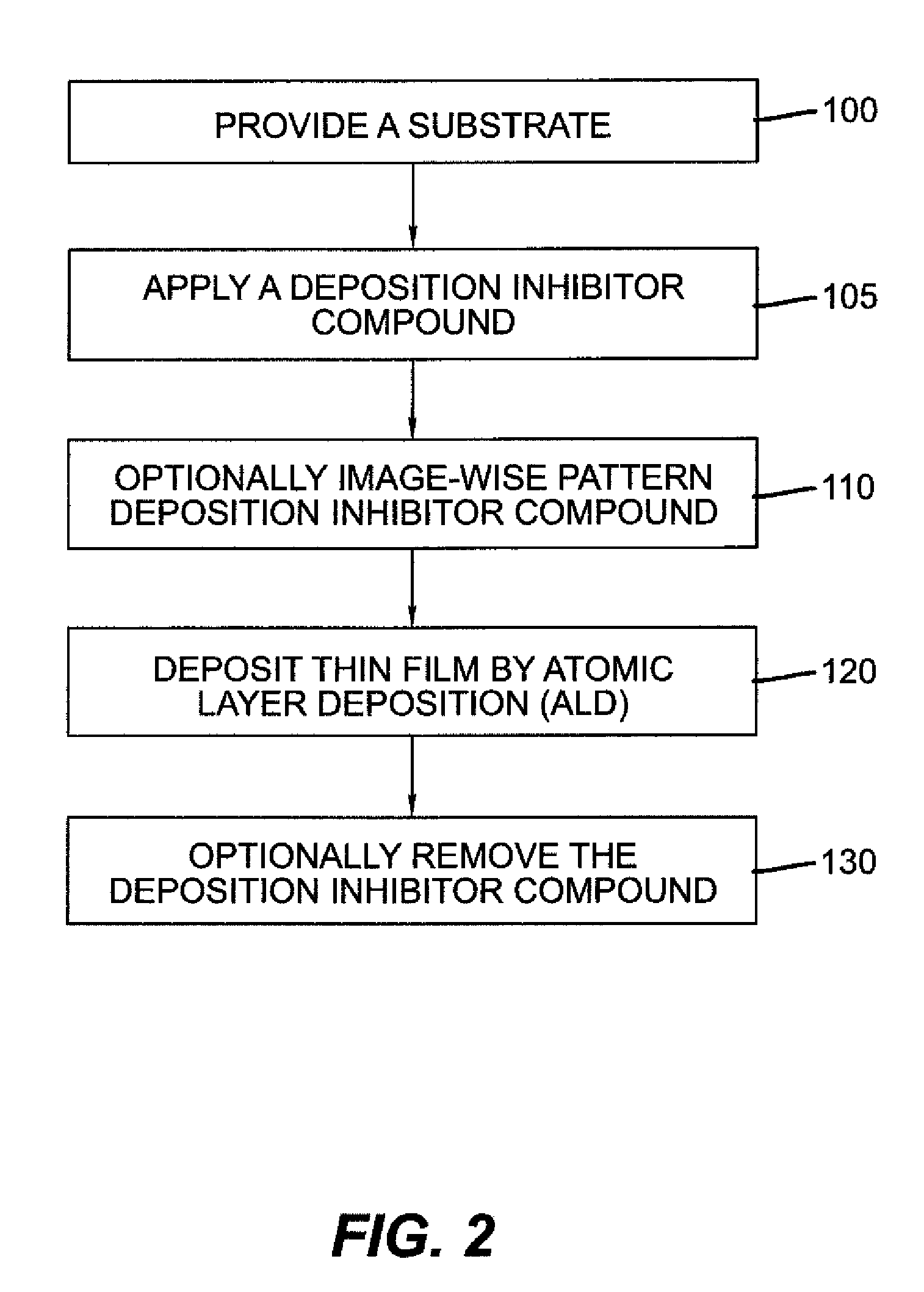Process for selective area deposition of inorganic materials
a technology of inorganic materials and selective area deposition, which is applied in the direction of vacuum evaporation coating, chemical vapor deposition coating, coating, etc., can solve the problems of limiting device processing to below 200° c, requiring relatively difficult or complicated processes, and amorphous silicon deposition
- Summary
- Abstract
- Description
- Claims
- Application Information
AI Technical Summary
Benefits of technology
Problems solved by technology
Method used
Image
Examples
example 1
Selective Area Deposition (SAD) of Al2O3 Dielectric Layer by Siloxane Polymer
[0156]Solutions of Part A and Part B of DEHESIVE 944 vinyl-terminated dimethylsiloxane polymer (“siloxane polymer”) were prepared by dissolving ingredients in a mixture of toluene and heptane according to the formulation specified in Table 2. Equal amount of Parts A and B were then mixed and diluted by a factor of 10 using a mixture of toluene and heptane (33 / 48 ratio) to form the stock solution of the siloxane polymer.
TABLE 2IngredientPart APart BSiloxane Polymer (30% Solid)90.090.0Crosslinker V240.10.0Catalyst OL0.03.0Toluene2000.02000.0Heptane2910.02910.0
[0157]The capability of SAD of Al2O3 by the siloxane polymer was then tested by coating half of a Si wafer with the siloxane-polymer stock solution. Half of the Si wafer was taped off with a Kapton sheet by scotch tape, and the siloxane-polymer stock solution was spun onto the untaped half (3k RPM for 1 min). The tape and KAPTON polymer sheet and tape we...
example 2
Selective Area Deposition (SAD) of ZnO Semiconductor Layer by Siloxane Polymer
[0158]A Si wafer, half side coated with a thin layer of DEHESIVE 944 siloxane polymer as described in Example 1, was subject to ZnO deposition following the same procedure as described in Comparative Example 2. After 300 deposition cycles, a uniform film of ZnO with an average thickness of 565 Å was formed on the un-protected side, but no detectable deposition of ZnO was found on the siloxane-polymer protected side.
example 3
[0159]Selective Area Deposition (SAD) of IZO Semiconductor Layer by Siloxane Polymer
[0160]A Si wafer, with a half side coated with a thin layer of DEHESIVE 944 siloxane polymer as described in Example 1, was subject to InZnO (IZO) deposition following the same procedure as described in Comparative Example 2, except that a flow of trimethylindium vapor was combined with the diethyl zinc flow. The solid trimethylindium (TMI) precursor was contained in a glass bubbler and its vapor was entrained in a flow of nitrogen. The relative ratios of nitrogen flow into the DEZ and TMI bubblers were 13 and 80 sccm, respectively. The Si wafer was maintained at a temperature of 240° C. After 300 deposition cycles, a uniform film of IZO was deposited having an average thickness of 565 Å on the un-protected side, but no detectable deposition of IZO was found on the siloxane-polymer protected side.
PUM
| Property | Measurement | Unit |
|---|---|---|
| Temperature | aaaaa | aaaaa |
| Temperature | aaaaa | aaaaa |
| Temperature | aaaaa | aaaaa |
Abstract
Description
Claims
Application Information
 Login to View More
Login to View More - R&D
- Intellectual Property
- Life Sciences
- Materials
- Tech Scout
- Unparalleled Data Quality
- Higher Quality Content
- 60% Fewer Hallucinations
Browse by: Latest US Patents, China's latest patents, Technical Efficacy Thesaurus, Application Domain, Technology Topic, Popular Technical Reports.
© 2025 PatSnap. All rights reserved.Legal|Privacy policy|Modern Slavery Act Transparency Statement|Sitemap|About US| Contact US: help@patsnap.com



